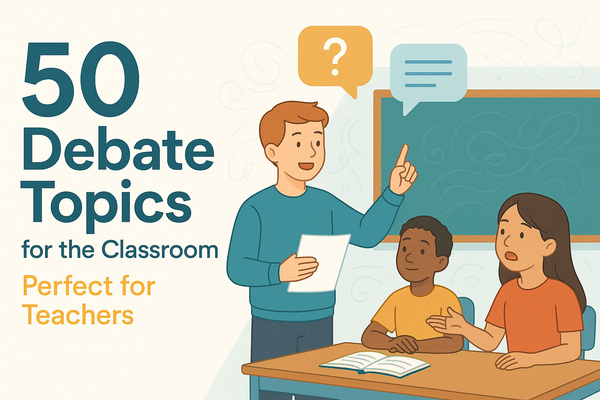Teaching Double Consonant Words: Tips & Examples

Teaching double consonant sounds is a fundamental part of helping students build strong reading and writing skills. These words not only enhance a student’s understanding of phonics but also play a vital role in shaping their comprehension of word meanings. However, learning double consonants can sometimes be tricky, especially for young learners who are just getting familiar with the rules of language.
In this blog, we will break down the basics of double consonant sounds - what they are, how they work, and why they matter. Plus, you will find practical tips, engaging activities, and helpful exercises designed for teachers to guide students in mastering double consonants.
What Are Double Consonants?
Double consonants are an important element of the English language that appears in words where two identical consonant letters are placed consecutively. Common examples include words like puppet and summer, where the repeated consonant creates a distinct pattern in the word’s structure.
Double consonants can change the meaning and pronunciation of a word entirely, playing a key role in both phonics and spelling. Mastering double consonant sounds is crucial for developing strong reading and writing skills. Recognizing and understanding when and why they appear in words is important in helping students improve their pronunciation and spelling accuracy.
3 Rules for Double Consonants
Double consonants play an important role in English grammar, affecting pronunciation and helping to distinguish between similar-looking words. Understanding the rules that help students grasp the concept of double consonants is helpful.
1. Doubling Consonants After a Short Vowel Sound
When a short vowel sound comes before a consonant, that consonant is often doubled. This doubling ensures that the vowel sound remains short. For example, in the word kitten, the double “t” signals that the “i” has a short vowel sound.
Without the double consonant, the word’s pronunciation could change completely. This rule helps students understand why certain words are spelled the way they are and builds their confidence in identifying short vowel sounds.
2. Doubling Consonants When Adding Suffixes
Adding suffixes like “-ed,” “-ing,” or “-er” to words that end in a consonant often requires doubling that consonant. This keeps the original sound of the word intact. For example, when the word swim becomes swimming, the “m” is doubled to maintain the short “i” sound.
Similarly, words like hop double the final “p” to form hopping. This rule also applies when a silent “e” is present in the base word, ensuring students can confidently spell and pronounce words with suffixes.
3. Doubling Consonants to Differentiate Between Words
Sometimes, double consonants are used to distinguish words with similar spellings but different meanings. For instance, diner refers to a place where people eat, while dinner indicates the main meal of the day.
Similarly, words like manner and manor or slender and slander rely on spelling differences to communicate entirely separate ideas. Understanding this helps students see the importance of accurate spelling in conveying meaning.
When Should You Teach the Double Consonant Rules?
Teaching the double consonant sounds rule depends on the grade level and students. Here is how you can approach it across different grades.
- Kindergarten: At this stage, explicitly teaching the double consonant rules is not common. However, when encountering words that naturally include double consonants, you can guide students to pronounce the sound only once. This introduces the concept in a simple, relatable way without overwhelming young learners.
- First Grade: First grade is typically the ideal time to introduce the rules formally. Regular practice and review are essential at this stage to help students apply the rules consistently in their spelling.
- Second Grade: By the start of second grade, students revisit the double consonant rules as part of their review. For some learners, additional reinforcement may be necessary to ensure they can apply the rule in their writing.
List of 30 Double Consonant Words
To help you, we have gathered a list of thirty words that exhibit double consonants.
- Apple: The double “pp” makes the “p” sound crisper.
- Balloon: The double “ll” emphasizes the “l” sound.
- Bitter: The double “tt” provides a harder, abrupt “t” sound.
- Classroom: The double “ss” and “oo” emphasize distinct sounds in the word.
- Cliff: The double “ff” strengthens the “f” sound.
- Dizzy: The double “zz” makes the “z” sound sharp and buzzing.
- Drummer: The double “mm” gives the “m” sound more weight.
- Falling: The double “ll” elongates the “l” sound.
- Funny: The double “nn” makes the “n” sound more pronounced.
- Gorilla: The double “ll” softens the flow of the word.
- Happy: The double “pp” creates a burst of air with the “p” sound.
- Hidden: The double “dd” makes the “d” sound stronger.
- Hobby: The double “bb” gives the “b” sound more emphasis.
- Jelly: The double “ll” lengthens the “l” sound.
- Letter: The double “tt” sharpens the transition between syllables.
- Llama: The double “ll” adds a distinctive roll to the “l” sound.
- Muffin: The double “ff” intensifies the “f” sound.
- Needle: The double “ee” creates a long vowel sound, while the “d” is softened.
- Off: The double “ff” ends the word with a stronger “f” sound.
- Puddle: The double “d” ensures a distinct pause in the middle of the word.
- Pillow: The double “ll” emphasizes the “l” sound for smooth pronunciation.
- Puppet: The double “pp” provides a sharp burst of the “p” sound.
- Rabbit: The double “bb” makes the “b” sound more defined.
- Ripping: The double “pp” strengthens the connection to the short vowel sound.
- Running: The double “nn” adds clarity to the pronunciation.
- Shell: The double “ll” lengthens the “l” sound, creating a smooth finish.
- Silly: The double “ll” stretches the “l” sound for a playful tone.
- Swimming: The double “mm” gives the “m” sound more prominence.
- Telling: The double “ll” ensures the word flows smoothly.
- Willow: The double “ll” adds a musical rhythm to the pronunciation.
This list offers a diverse range of examples, showcasing how double consonants influence pronunciation and enhance clarity in English words. To make teaching easier and fun, you can also explore AI tools like teacherbot.io and ease your workload as a teacher.
5 Fun Double Consonant Activities
Teaching double consonant words becomes more effective when the process is engaging and interactive. Here are five creative activities to help students overcome the challenges of learning double consonant words while having fun.
Interactive Word Games
Word games are a fantastic way to make learning double consonants enjoyable and educational. Such games can improve students' critical thinking and problem-solving abilities. Create flashcards, word puzzles, or online games focusing on double-consonant words. For example, matching games where children pair a word with its correct double consonant spelling can make the process exciting. These activities build recognition and enhance the retention of double consonant rules.
Themed Word Searches
Word searches are an excellent tool to reinforce the spelling and recognition of double-consonant words. Customize puzzles with fun themes like animals, holidays, or favorite foods, and include various double consonant words. For example, words like “puppet,” “kitten,” or “summer” could fit into an animal-themed puzzle. These puzzles make learning feel more like play and less like work.
Creative Writing Challenges
Encourage children to write short sentences, poems, or stories using a list of words with double consonant sounds. For instance, challenge them to use words like “butter,” “hopping,” or “fluffy” creatively in their writing. This activity not only reinforces spelling but also boosts vocabulary, grammar skills, and imagination.
Double Consonant Sorting Game
Provide children with a mix of words that include and exclude double consonants. Have them sort the words into “Double Consonants” and “No Double Consonants.” To add a challenge, include similar-looking words, such as “hop” and “hopping” or “slim” and “slimmer.” This sorting game helps children focus on identifying patterns in words.
Hands-On Craft Activities
Incorporate arts and crafts to make double consonant learning more fun. For example, create a word wall where children can paste double consonant words or design colorful posters highlighting rules and examples. Another idea is to use playdough or magnetic letters to spell double-consonant words.
Common Difficulties in Double Consonant Sounds
Learning double consonant sounds can be tricky for students as it requires understanding specific spelling and phonetic rules. Here are three key challenges they often face.
- Identifying whether a vowel sound is short or long can confuse children, especially since double consonants often indicate a short vowel sound.
- Some double consonant words have irregular or uncommon patterns, such as “accommodation” or “misspell.” These outliers make it harder for young learners to apply standard spelling rules consistently.
- Memorizing double consonant rules is challenging due to numerous exceptions. For instance, while many short vowel words have double consonants, some, like “oven” and “evil,” don’t follow this pattern.
Effective Tips for Teaching Double Consonant Sounds to Students
Teaching double consonant sounds can be an engaging experience for both teachers and students if approached strategically. Below are some practical and effective tips to help students grasp double consonant rules confidently.
1. Start with Simple Words and Patterns
Begin with easy-to-understand examples like "ball," "bell," and "kitten." Introduce the concept of double consonants in a step-by-step manner. Focus on simple words where double consonants appear after a short vowel sound.
2. Use Visual Aids
Visual aids like charts, flashcards, and word walls can make learning double consonants more accessible. Create a colorful chart listing double consonant words under categories such as “-ll,” “-tt,” and “-pp.”
3. Encourage Hands-On Activities
Interactive activities such as writing exercises, spelling games, and word puzzles keep students engaged. For instance, ask students to create their own sentences using double consonant words.
4. Practice Differentiating Words
Teach students to differentiate between similar words to understand the role of double consonants. Compare examples like “hop” and “hopping” or “win” and “winning.” Highlight how the doubling of consonants maintains the short vowel sound and changes the word's tense or meaning.
5. Reinforce Through Repetition
Repetition is key to mastering double consonant words. Incorporate regular spelling tests, dictation exercises, and reading sessions that include these words. Consistent practice ensures students retain the rules and apply them confidently.
6. Integrate Technology
Leveraging educational apps and online games, such as using blooket, can help focus on spelling and phonics. Many tools are designed to teach double consonant patterns in an engaging and interactive way, allowing students to practice independently while receiving instant feedback.
7. Be Patient and Provide Encouragement
Learning double consonant rules may take time, especially for younger students. Offer plenty of positive reinforcement and celebrate their progress. Recognize their efforts, even if they make mistakes, and guide them gently toward improvement.
Conclusion
Mastering double consonant words does not have to be a daunting task. With the right strategies, engaging activities, and consistent practice, students can quickly grasp these spelling rules and enhance their overall language skills.




